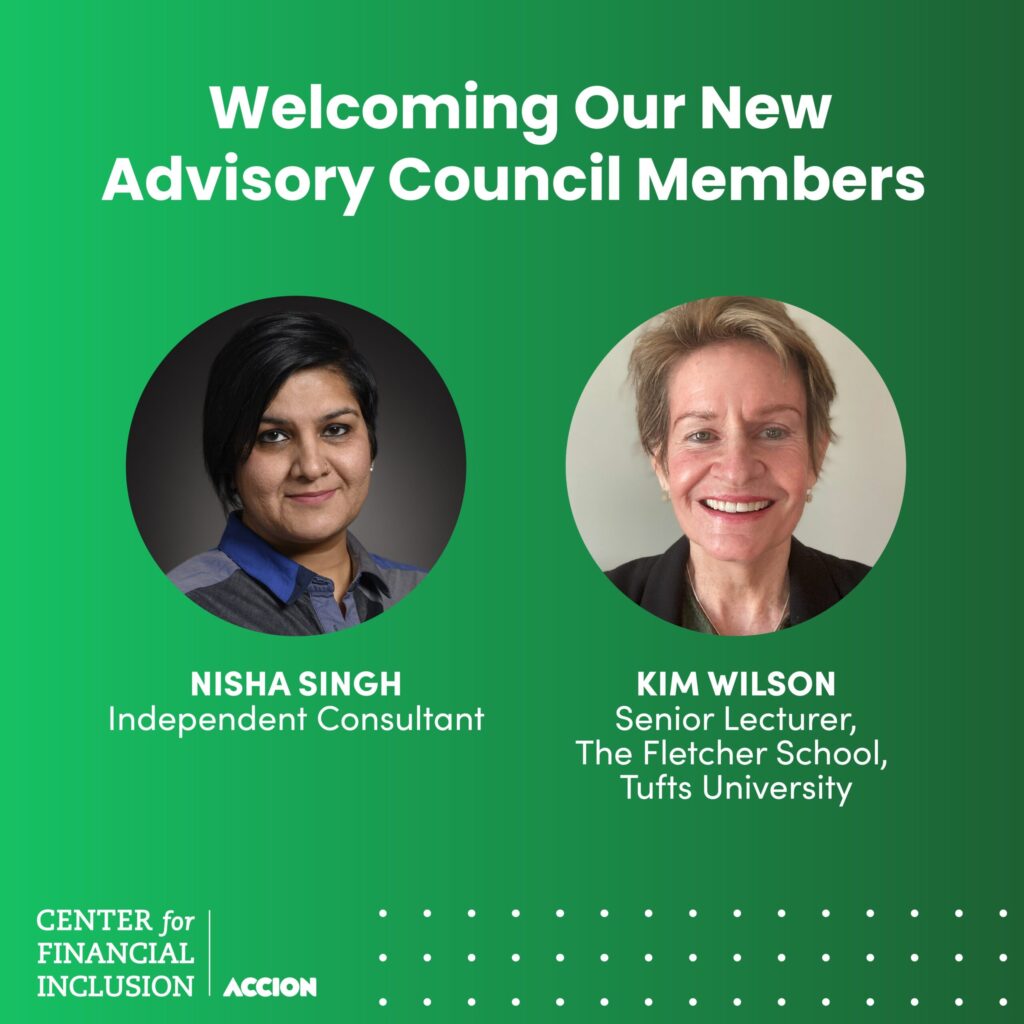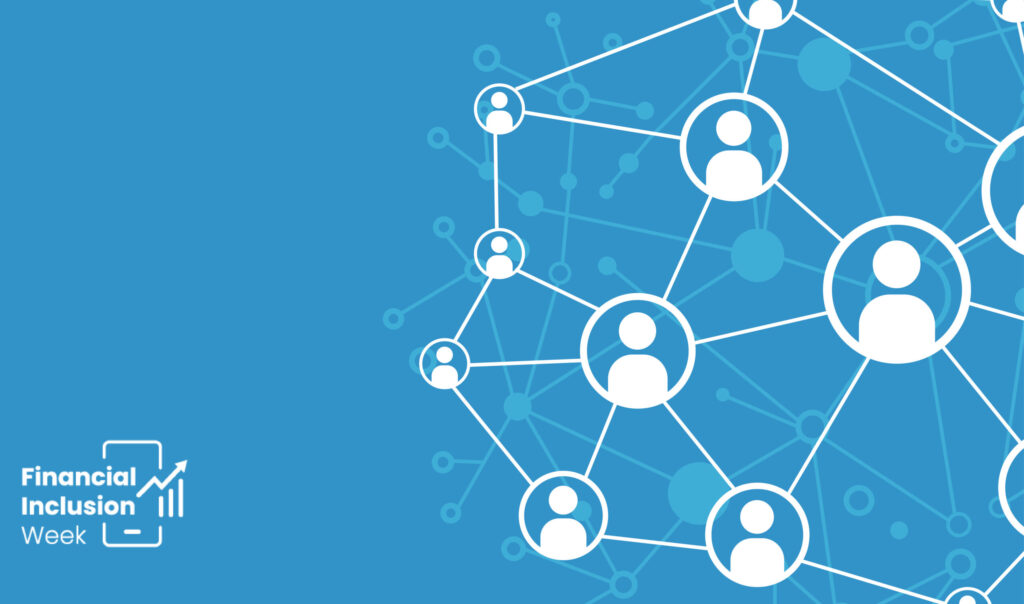
Digital adoption has been transforming the inclusive finance ecosystem for years. Innovation is robust, digital service providers for the industry are expanding, the competition to roll out digital financial services to clients is fierce, and up and down the value chain companies are excising physical offices and field staffs. As a result, clients’ digital access is broadening across the globe. Arriving mid-metamorphosis, the COVID-19 crisis altered the dynamic considerably. How has the pandemic affected the shift to digital finance? How are inclusive financial service providers incorporating digital tools? Can digitalization revitalize the inclusive finance sector? What challenges need sustained attention?
These were among the questions considered by a gathering of two dozen microfinance organization leaders, impact investors, and analysts from around the world at a workshop hosted by Lehigh University’s Martindale Center. Sharing views on how financial inclusion interacted with the socio-economic crises of the pandemic, participants built on the success of a previous workshop that resulted in publication of The Future of Microfinance by Brookings Institution Press in 2020.
Pandemic as Accelerant
Workshop participants across every region confirmed the pandemic accelerated digital adoption across client populations and inclusive financial service providers (iFSPs). For clients, digital payments—e.g., mobile money, government transfers, access to savings, remittances, loan distributions—were most visible and provided liquidity, especially during shutdowns. Simultaneously, digital loan repayments helped sustain iFSP liquidity. Yet digitalization extends far beyond payments, from back-office operations and new digital products to automated decision-making algorithms and platforms for onboarding clients and fulfilling regulatory mandates.
Faster. Cheaper. Easier. More scalable. More accessible. Compelling stuff. What’s not to like? The workshop discussion centered around three broad areas of concern: formidable capital requirements, big barriers to technology management capacity building, and consequences of market and firm structural changes.
Capital is the Principal, Partners are Capital
Digitalization of the inclusive finance sector will require substantial investment. Progress has been facilitated by investments from governments and development financial institutions (DFIs). Examples include electronic payment systems in Papua New Guinea and Fiji, Tonga’s remittance corridor to global payment systems through partner banks in New Zealand and Australia, and India’s digital bank accounts for all citizens linked to national ID numbers and mobile phones.
Nonetheless, participants agreed that access to capital for expanding digitalization remains largely limited to large, professionally managed institutions (i.e., Tier 1, assets >$100M) which attract global investors by rigorous attention to risk, sophisticated portfolio management, and superior, transparent governance. However, even that top tier, as discussed in another CFI blog from the workshop, is having difficulty recapitalizing in the wake of COVID-19. Moreover, any funding is unlikely to be accompanied by the technical assistance grants so critical to previous capacity building in the sector.
Despite limited funding, iFSPs are proving resourceful.
Despite limited funding, iFSPs are proving resourceful. To reduce development and implementation costs, some have looked to partnerships. For example, Pierette Kouakou, Managing Director of Fin‘Elle (Cote d’Ivoire), reported that bank partnerships forged during COVID expanded her clients’ access from five branches to over 200 branches within a banking network. In Indonesia, iFSPs leverage clients’ embrace of social media platforms like WhatsApp to facilitate communications and payments.
Similarly, many fintech companies are playing roles that are more complementary than competitive with more traditional microfinance institutions (MFIs). A recent survey by KPMG in India indicated that nearly 75 percent of surveyed MFIs have alliances with fintechs, and the rest are exploring forming such alliances. Partnerships can serve as a learning tool before attempting a new venture alone. However, Edgardo Perez, CEO of Fundación Génesis Empresarial (Guatemala), reported moving away from partnerships as Génesis developed its own digital capabilities, which raises a question for iFSPs around what is the balance and path for developing internal capabilities versus partnering to obtain them?
Capacity Building and Clear-eyed Leadership
A second main theme at the workshop was the importance of capacity building for managing these technologies. Workshop participants agreed that while funding and digital infrastructure are necessary, they are not sufficient for success. Thoughtful and prudent leadership is crucial for implementing digitalization. Yet a lack of management capacity within institutions is slowing adoption. The management challenges are many, even at the basic level: setting up a tech team requires significant hiring, talent development and, crucially, managerial time to oversee the team and its integration into the organization.
Providing strategic focus is also essential. Alex Silva, Executive Director of Calmeadow, emphasized the need for clear and well understood reasons for digital adoption and for persistent organizational support. Leadership and staff must regularly reassess the reasons underlying digital adoption. Silva pointed out that all three Latin American MFI CEOs at the workshop had led successful implementations of a range of digital processes and services—success driven by client-centric foci and clear understanding of client needs and capabilities. However, the experience of a small MFI that accepted an unsolicited grant to digitize, but ended with little to show for its efforts, serves as a cautionary tale that digitalization is not a silver bullet.
Digitalization requires culture change, within and without the iFSP, over long time horizons.
Participants further agreed that digitalization requires culture change, within and without the iFSP, over long time horizons. Executives must navigate the narrow path between moving too fast and outpacing abilities and moving too slow and losing relevance. Given the existing demands on management, there was serious lament about the lack of capacity building grants that had for decades effectively propelled microfinance.
Potential Within Existing Resources
While building managerial capacity and new resources can catalyze change, some participants highlighted the potential of existing capabilities and relationships. Mercedes Canalda, CEO of Banco Adopem (Dominican Republic), pointed out that a core strength of many iFSPs is educating clients and onboarding them to new technology, providing the iFSP advantages over fintech competitors. Additionally, many institutions invest heavily in their client communities. Iwan Nazirwan, Chairman of KRAF (Indonesia), reported that MFI lending groups in Bali are spreading digital literacy by helping each other learn to use digital services on their phones.
And, of course, digitalization has greater impact when integrated across whole organizations. Ralph Guerra, CEO of Compartamos Financiera (Peru), advocated for starting digitalization with existing staff so that digitized staff will in turn push further adoption—as most front-line staff are from the same populations as their clients, they are best situated to mentor clients.
The extensive client data already in the hands of iFSPs are another key resource. Once digitized, client data can help inform product design to better meet client needs, reduce risk, and track impact. For example, Fundación Génesis Empresarial segments clients to understand group needs and business cash flow rhythms and then tailors services accordingly (e.g., matching loan disbursements to prevalent cash flow patterns). Génesis is also using technology to make onboarding easier.
Unintended Consequences
The third broad theme emerging from the workshop was the challenges and consequences that arise when changing trajectory and moving away from long-standing structures that have supported operations and clients. Many have raised concerns of the impacts of digitalization on inclusion arising from low digital literacy, limited connectivity, or a lack of trust (warranted given data security risks) among certain parts of targeted populations. Increased digital adoption challenges existing modes of operating such as group lending. When payments are digital, what is the remaining value of group meetings, in-person meetings, and their staffing?
Some MFIs may shift away from field officers toward remote communications in the hope that costs will fall with increased productivity. But seeking such savings, which may or may not appear, will also alter the recruitment of staff in type and location. This shift of staff recruitment may jeopardize an important external benefit of the industry: the training and professionalization of a segment of rural labor. Field officer jobs have often been first steps in career paths within or beyond MFIs. What are its implications for rural development?
Will the quest for scale and scope efficiencies drive further standardization to the detriment of clients?
Questions arise too about industry structure. Currently iFSPs come in a wide array of organizational sizes, types, and missions. Digital adoption will upend the competitive structure of the sector. Critics characterize the industry as achieving scale with low-cost, standardized products that may not meet client needs. While the customer-centric focus of the participants at the Lehigh workshop belied this characterization, will the quest for scale and scope efficiencies drive further standardization to the detriment of clients? And will we see further consolidation or will the balance of competitive advantage tilt back towards smaller niche players? Even with fintech advances in penetration, certain population segments remain out of reach. Will smaller iFSPs have better business models for serving these populations with needed, potentially, specialized service? Can they survive independently without capital and/or partnerships?
Enhancing the Narrative
One of the central questions framing the Lehigh workshop was: What challenges need sustained attention in inclusive financial services? Perhaps the most pressing is the need for a compelling narrative to enhance support for digitization capacity building. Microfinance was the north star of impact investing for decades, attracting the majority of funding. Yet, attention among investors and funders has waned compared to its fast-growing neighbor fintech.
What might re-attract funders’ attention?
- Emphasizing microfinance’s hard-earned lessons of what creates success? These lessons include:
- Disciplined patient capital for capacity building and experimentation;
- Proven self-sustainability and scalability;
- Multi-layered ecosystem development;
- Fostering of staff and management talent;
- Customer-centric product tailoring;
- Transparency in pricing and in governance; and
- Collaborative information sharing.
- Further creating opportunities for complementarity with fintech to garner more attention?
- Collaborating with fintech to spur mission focus?
Regardless, digitalization will not come without pain, steadfast commitment, and vision by both leadership and the impact investing community. Inclusive finance institutions too tied to well-worn methodologies will be at risk, with underperforming investments and suboptimal, lower impact services to the communities they seek to serve.











